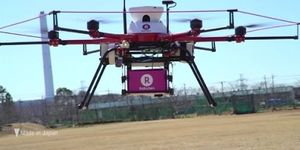Papua New Guinea establishes largest conservation area yet
After 32 long years of advocating from local communities and non-profits, Papua New Guinea’s recent declaration of the Managalas Conservation Area comes as a huge success. The area, which covers large swaths of forest on the Managalas plateau and will be Papua New Guinea’s largest conservation area, will protect 3,6000 square kilometers from large-scale agriculture and logging. Local communities will still be allowed to grow sustainable crops and use forest resources.
The Papua New Guinea Post-Courier reported a statement from Environment and Climate Minister Hohn Pundari, who signed the conservation area into existence in Itokama village: “Without environment, and without you and I, we will never enjoy the blessings of life. If we lose [the environment], we lose ourselves and that is also a global message.”
The plateau region faces similar threats that many other developing nations face when offered development through the exploitation of their natural resources. Industrial agriculture for palm oil plantations as well as mining and logging could destroy much of the primary forest that still exists in the region. Rainforest Foundation Norway (RFN), one of the drivers in the long fight for this conservation area, says that declaring the plateau a conservation area has already made an impact by diminishing the interest from extractive industries.
The conservation area is critical in that it connects several large patches of primary forest. Adjoining Intact Forest Landscapes, as they are called, will hopefully reduce deforestation and provide better habitats for the wildlife that live there.
The success of this story highlights the persistence of local people to protect their homeland. According to RFN, when it was originally publicized that the government was issuing mining exploration licenses, local communities and conservation organizations joined to take a stand by sending letters to the government stating their discontentment. This apparently made a difference: representatives from RFN confided to Mongabay News “As a result, the boundaries for the licenses were amended, and the mining company withdrew.”
Nevertheless, there is still work to be done to make the conservation area a reality. The declaration must obtain government endorsement from the management committee, which includes of tribal leaders, community-based organizations, and local governments, before the go-ahead to deploy park rangers. Locals say that roads within the region need to improve as well so that they can actually bring their crops to market and make a living. Conservationists are also particularly worried that the management plan for the area does not mention the prohibition of mining.
However, despite these to-do’s, all those who worked for so many years to bring this conservation area into existence are enjoying their success for the time.
Sources: Mongabay News, Radio New Zealand










